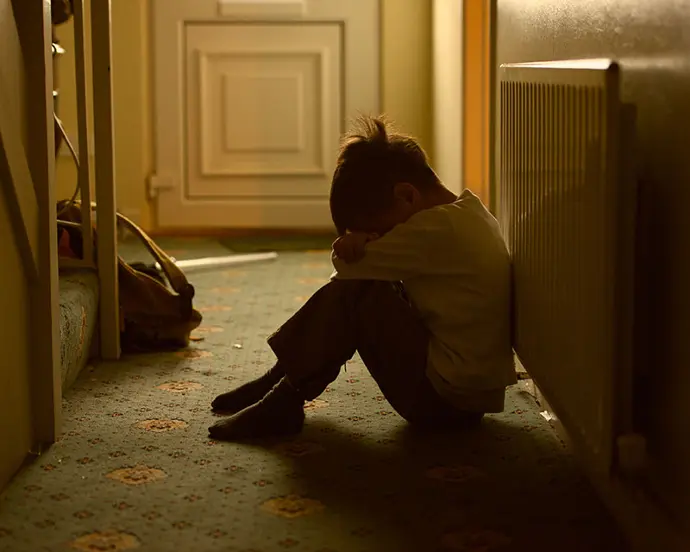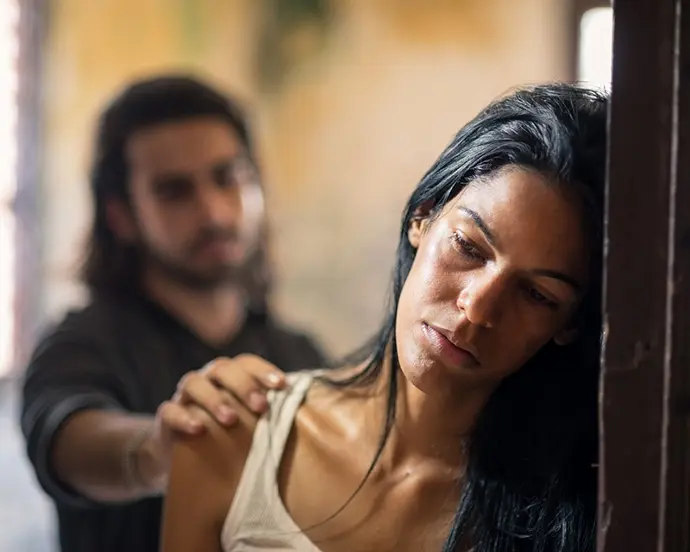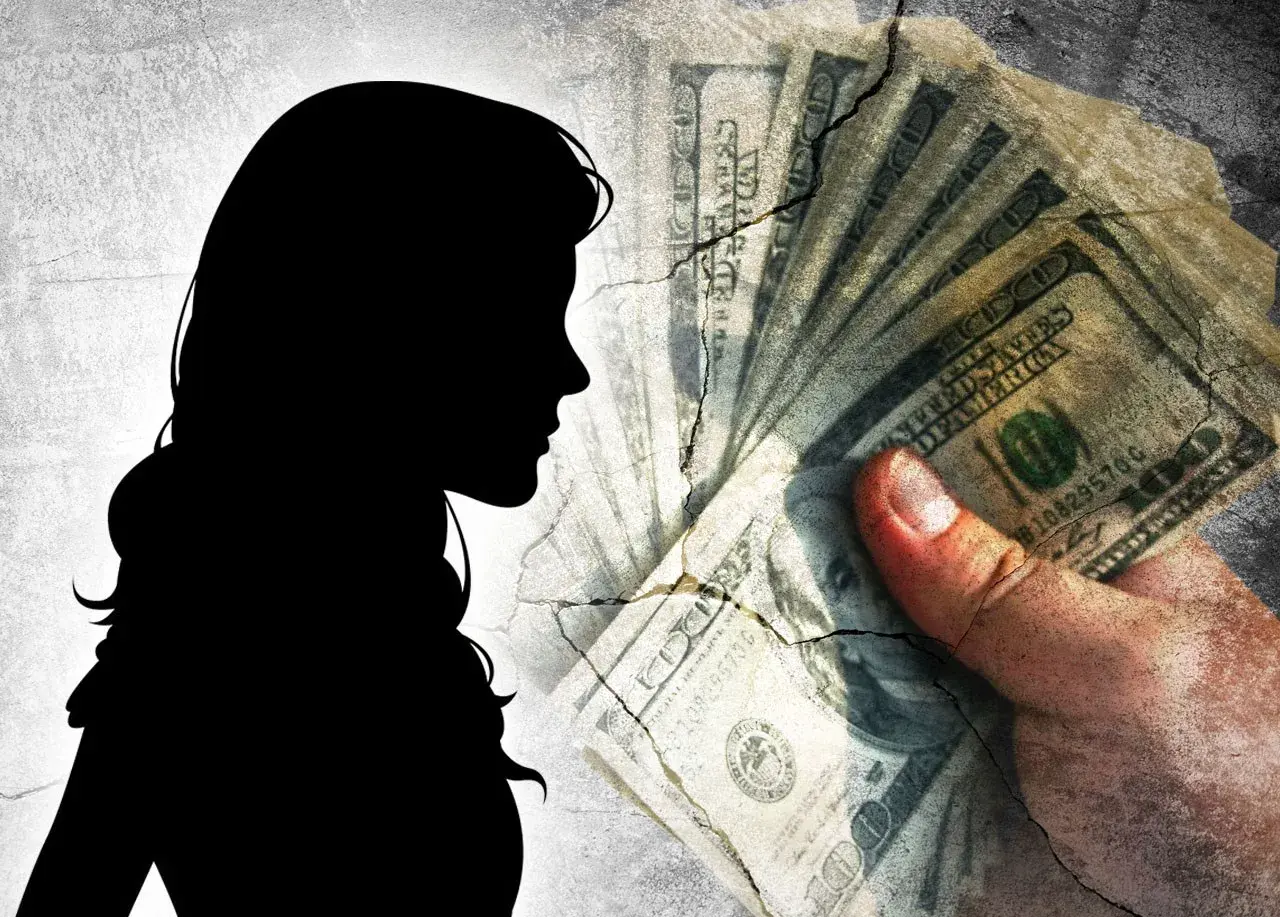How does it begin?
People in sex trafficking situations almost always know and even trust or love their traffickers. Traffickers target vulnerable people who have needs that the traffickers can fill. Sometimes they offer material support – a place to live, clothing, a chance to “get rich quick.” Other times they offer love, emotional support or a sense of belonging. Kidnapping victims and forcing them into the sex trade through violence is rare.
Who are the traffickers?
Traffickers come from all genders, races, ethnicities and walks of life. In sex trafficking situations, they may be intimate partners or spouses of the victims, family members, friends or benefactors, business acquaintances and bosses.
Who are the victims?
Anyone can be trafficked, but some people are far more vulnerable than others because they have greater needs. These include people living in poverty or in unstable housing situations, as well as people with a history of trauma or addiction. Because of current and historic discrimination and inequity, people of color, immigrants, and people who identify as LGBTQ+ are more likely to be exploited for these vulnerabilities and face trafficking.
Why don’t victims just leave?
In many cases, people in sex trafficking situations do not see themselves as victims while they are being trafficked. They have been so expertly manipulated or “groomed” that they believe they are making their own choice to engage in commercial sex. These emotional ties are as powerful as being held in handcuffs or behind bars. People in sex trafficking situations may well also depend on their traffickers for physical needs like money or shelter. They may face threats against them or their families or violence if they complain or try to leave.
How do people get out of sex trafficking situations?
Every story is different. What they have in common is resilience. Survivors come to the understanding that they want to leave the situation, and then fight to get out. Sometimes they get help from service providers, or anti trafficking organizations, but the concept of “rescuing” adult sex trafficking victims is misleading and dangerous. Survivors rescue themselves.
How do we reduce or prevent sex trafficking?
Human trafficking doesn’t happen in a vacuum. It is the end result of other inequities in our society and our economic system that make people vulnerable to the enticements of traffickers. So while prosecuting traffickers and seeking justice for survivors is vital, it is not enough by itself to end trafficking. To reduce trafficking at the massive scale of the problem, we need to work together as a society to increase supports and services for vulnerable people and change conditions – like homelessness, family violence, poverty and discrimination – that make people vulnerable to the lure of traffickers.
Romeo pimps or “boyfriending”
- Recruitment and grooming: A man and a woman meet briefly at a party and afterwards, he follows her on social media. He contacts her after she posts about a breakup with her baby’s father. He is everything she ever dreamed of – a great listener, very supportive. He showers her with gifts. She is deeply in love and believes she has found the person she will build her family with. One night he takes her to a party and he tells her to be “nice” to his friends – to earn jewelry. He makes it seem like it’s no big deal at first, so she does it. But then it becomes more frequent.
- Coercion and control: He keeps all the money she earns and tells her he is saving for them to buy a house. Sometimes he hits her to help her understand how much he needs for her to contribute. He says he will stop loving her and she will be alone again if she keeps making trouble.
- Exit: After he blackens her eye, she packs up a “go” bag, calls a friend and escapes when her trafficker is out of the house.


Familial trafficking
- Recruitment and grooming: Mom is a survivor of rape and abuse who has been prostituting for many years. In her community, there are few options for young people and she is already struggling to support her children. When men start expressing interest in one of the kids, she tells her it’s time to contribute to the household and takes her out on the streets.
- Coercion and control: The child loves her mother, and has no other means of support.
- Exit: A teacher notices the child is tired all the time and appears frightened and asks if she needs support. The child confides in her and a social services team comes together to work out a safe place for her to stay.
Child trafficking
- Recruitment and grooming: A parent sexually abuses a child himself, and offers the child to others for sexual gratification in exchange for access to other young children.
- Coercion and control: The child has been taught that this kind of activity is ‘normal’ for parents and children and warned not to tell anyone or they will be hurt. NOTE: Coercion or control is not legally required for this to be considered trafficking because the victim is a minor.
- Exit: An ER doctor notices signs of sexual trauma and alerts child protective services to check on the family after the visit.


Online Trawling
- Recruitment and grooming: A lonely, insecure teen dreams of a modeling career and frequently posts pictures of herself striking a pose. She is contacted by someone who claims to be a modeling agent and sends her a plane ticket to come to his studio. When she arrives, he takes her out on the town and tells her she has to “be nice” to some people in the business to get contracts and sends her out to prostitute.
- Coercion and control: She is far from home, didn’t tell her parents she was leaving, has no money and is ashamed. He tells her she is making a good impression, and that it will just take a little longer for her hard work to turn into modeling jobs.
- Exit: Eventually the child contacts a friend, who tells her family where she is and she is extracted from the situation.
Survival sex
- Recruitment and grooming: A teen who identifies as queer runs away from home in a small Texas town when his stepfather beats him up for his sexual identity. He camps out in a bus station and meets other runaways who tell him about someone they know in Houston who will probably let him stay at his house – for a price.
- Coercion and control: The person who owns the house is very straightforward about the arrangement. The teen can stay there as long as they provide sex to the homeowner and occasionally, other friends. The teen does not have any other options for housing and is also seeking a community, which he hopes to find with the homeowner.
- Exit: The teen meets other young people who have run away. They connect him with a supportive shelter situation and he returns to school.


Exploitation of addiction
- Recruitment and grooming: A trafficker hangs outside the municipal courthouse chatting up people as they come out of drug court, where they were busted for use charges. He offers them drugs for free, and slowly feeds their addiction. Soon, in order to access drugs, the trafficker tells them that they have to engage in sex acts for money.
- Coercion and control: Whenever the victim begins to talk about getting clean and getting out of prostitution, stripping, or porn, the trafficker gives them more drugs and builds their dependency. He also warns that he will report their drug use to their probation officer if they leave.
- Exit: The victim contacts the National Human Trafficking Hotline, which helps them find a space in a drug rehab facility.
Exploitation of disabilities
- Recruitment and grooming: A young adult with a developmental disability and limited family support is placed in a group living facility.
- Coercion and control: At the home, residents are told that sex with strangers is part of what they are expected to do to earn their meals and rent.
- Exit: After many complaints from family members of other residents who have left the home, it is finally shut down and the residents are sent to other safe facilities.


Gangs
- Recruitment and grooming: A young woman grows up in a neighborhood where gangs control most of the commercial activity and the streets. She joins them for protection and a sense of belonging, and because there are few other options available. The gang tells her she has to engage in prostitution and give them the proceeds to help them pay a drug debt they owe to a rival gang.
- Coercion and control: If she leaves the gang, her family, their home and their business will be targeted for violence.
- Exit: When the gang is targeted in a police raid involving drugs, she is swept up by a trauma-informed police officer who understands the situation and connects her with appropriate supports.
“CEO pimping”
- Recruitment and grooming: A young woman who grew up in foster care ages out and is left without a place to live or guidance for her future. She meets a man at her job at a gas station who tells her he has connections in the entertainment industry and she should come dance at his strip club where she will meet producers who might need an assistant. After a few weeks, he tells her the reason she isn’t getting noticed is that she does not perform sex acts in the club’s back room after her shift ends.
- Coercion and control: When she doesn’t comply, he threatens to fire and blackball her from any other clubs or music venues in the city. He also makes veiled threats about hurting her and her young child.
- Exit: She stays until she is able to save enough money to quit and begin community college.

Human trafficking virtually never begins with kidnapping or other violent acts. Traffickers almost always know their victims. They are friends, acquaintances who offer jobs, members of their own families or romantic partners.
Glossary of Terms
As content creators, you know that language matters. In the anti trafficking movement, this is particularly true. The words you use in reference to the sex trades in particular often carry weight far greater than you may have intended. Here’s what you should know:
Sex trafficking and the sex trades
Decriminalization
The anti trafficking movement is largely united around the idea that no one should be arrested for providing sexual services. Arresting people for directly selling sex helps no one and actually makes things worse for people in trafficking situations, saddling them with criminal records that can derail their lives when they manage to leave the trafficker. But the movement is sharply divided over the more nuanced question of what else around the sex trade should be decriminalized:
Full decriminalization
No criminal penalties for buyer or seller
Legal to buy sex
Legal to own a brothel
Legal to procure/pimp
Partial decriminalization
No criminal penalties for the seller only
Illegal to buy sex
Illegal to own a brothel
Illegal to procure/pimp
Supporters of full decriminalization believe that selling sexual services should be a choice and that a fully legalized environment will keep people who choose to be in the sex trades safer.
Supporters of partial decriminalization believe that full decriminalization will bring more sex buyers into the marketplace, but will not lead to a corresponding increase in the number of people voluntarily choosing to sell sex. That will result in a market imbalance and traffickers will step in to recruit more victims to fill the gap.
Where you fall in this debate, and it is an extremely complicated and hard- fought one, will then shape which words you choose to describe various aspects of and roles within the sex trades.
Sex work
Most people who support full decriminalization refer to the direct sale of sexual services as sex work and those involved as sex workers. The term is consciously crafted to destigmatize the sex trades and empower people who choose to earn their living this way, which defines someone wholly by this activity.
Prostitution
Many in the anti trafficking world believe the term sex work is misleading because the activity involved is neither sex, nor work – it is rape/ assault. Instead, they use prostitution which is legally accurate and well understood. Those living this experience would generally refer to people directly selling sex as prostituted people or people in prostitution as opposed to the more stigmatizing “prostitutes.”
Rescue language
To do so, many adopted language and tropes that simplified the extremely complex nature of trafficking into a more digestible and compelling narrative – of villainous evildoers, damsels in distress, and swashbuckling heroes.
But the truth is, adults in sex trafficking situations generally do not see themselves as victims while in the situation. And so they do not want or need “rescue,” in any physical sense. And if you try to get someone out of a trafficking situation before they are ready, they will likely return.
Today, our understanding of adult sex trafficking has evolved. It’s understood that that oversimplification and dramatization – use of certain tropes and language – is not only inaccurate but actually harmful because it creates a false picture of the problem, which leads to ineffective solutions and harm to survivors.
Instead consider:
Support
Assist
Help to recover
Rebuild and heal
Don’t use:
Rescue
Save
Set free
Voice for the voiceless
Modern slavery
The language of blame
Sometimes sentence construction makes all the difference in how people understand trafficking. Specifically, certain sentence constructions imply the person selling sex has chosen to do so, while others suggest that this person may be in a trafficking situation.
Problematic
- “He sold sex”
- “She sold sex”
Preferred
- “He was sold for sex”
- “She was bought for sex”

 IHRO NEWS
IHRO NEWS